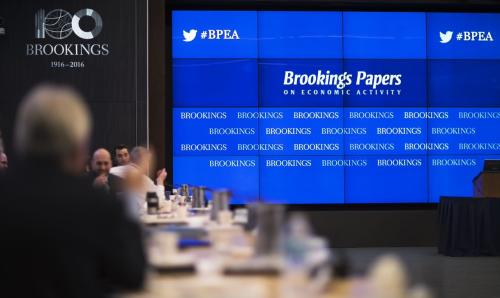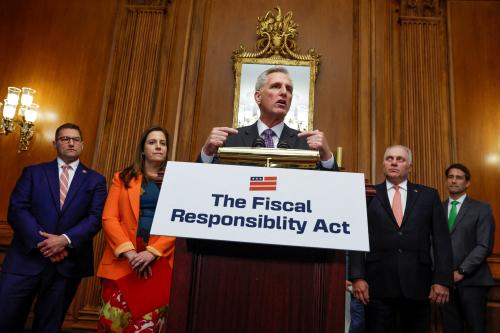If another recession hits, does the Federal Reserve have any tools left to bring the economy back to growth and stability? Or has it run out of ammunition? Jon Faust of Johns Hopkins University argues that, with short-term interest rates still near zero, the Fed’s tools may not be as powerful or effective as usual.
These no-longer new methods include cutting short-term interest rates to zero, offering what Faust calls “information-only forward guidance” to tell financial markets where Fed officials expect short-term interest rates to be in the future, and engaging in trillions of dollars of large-scale asset purchases, also known as quantitative easing (QE), to push down long-term interest rates. Looking to the next recession, Faust notes that forward guidance might still work, but may not be as effective as it was when first introduced. The Fed also could resume QE, but long-term rates already are so low that there’s not as much room to push them down as in early rounds of bond purchases.
So what tools might the Fed try next? Pondering unconventional monetary tools is more than an intellectual curiosity. With interest rates low and expected to remain so, the probability that the Fed will have to use such tools in the future is higher than it has been in the past. Faust offers six possibilities.
1. Negative interest rates. Pushing interest rates below zero has been tried in Europe and Japan, but not in U.S. It’s a possibility, but one Faust thinks is not likely.
2. Prescriptive forward guidance. Faust describes a variation on information-only forward guidance, where a central bank publicly announces its commitment to a keeping rates low even after the economy recovers, so that households and businesses, anticipating future good times, spend more today. But, as Faust points out, there is probably no credible way for a central bank to commit to future policy.
3. Price level targeting. Under this policy, a central bank manipulates interest rates in order to keep the price level constant from year to year.
4. Alternatively, the central bank could use interest rates to target nominal GDP.
5. Raise inflation target of 2%. Along with price level targeting and nominal GDP targeting, raising the inflation target might be effective in the medium to long term, but they would probably not have an immediate effect and thus wouldn’t be that helpful if a recession hits soon, Faust says.
##7##
6. Finally there’s helicopter money: economists’ lingo for the Fed simply distributing cash to the population. As Faust notes, there’s a good reason this one hasn’t been tried–it’s probably not legal.
##8##
Regardless of the methods the Fed uses, interest rates will be influenced by global forces beyond the Fed’s control. The Fed remains the most important central bank in the world, but more than ever before, “What happens in Beijing and Riyadh is as important for 10-year Treasuries as what happens in Washington,” Richard Clarida of Columbia University and PIMCO says.
##9##
For video and transcript of the entire two-hour event on responding to the next recession, click HERE.



Commentary
Six ways the Federal Reserve could respond to the next recession
March 28, 2016